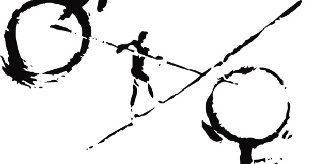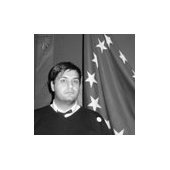Gender equality – what has the Union ever done for it?
Gender equality is a basic value of the EU. Its goals are to ensure equal opportunities and equal treatment betweens genders and prevent all sort of gender based discrimination. To achieve these goals the EU has a two dimensional way of handling the issue: special policies on gender issues and mainstreaming gender issues to all policies. Gender equality has also an international aspect: poverty reduction, education, health care, economics and taking part in decision making processes all around the world. At the base of all these actions is to recognize women’s rights as human rights.
The Union has made laws about equality for fifty years but still inequality is a real life in the EU. The EU has thirteen laws about equality, but for example women’s Euro is still about 85 cents and women’s unemployment rate is higher than men’s – and these are only the examples from working life. Many of Union’s actions on gender issues often contribute to employment and growth. And that’s good, because the problems we have in working life for women are quite easy to fix – it just needs will. EU encourages the Member States for example to reduce the employment rate gap between women and men, scale down the pay gap and attack its underlying causes, tackle sexist stereotypes and encourage men to take up their domestic and family responsibilities and promote and disseminate innovative and adaptable work arrangements that take into account the different needs at different stages of life.
On the political level the EU also encourages strengthening their implementation of the principle of gender mainstreaming into all relevant policy areas and ensure that gender bias is avoided in policy monitoring – just few things to mention. The Union has many reports, working groups, policies and laws which deal with gender issues and women’s rights. So it looks like EU has a good will on gender equality, but what has it really done? The European Commission has not brought an action to any Member State because it failed to observe the equality laws of the Union. It seems – as it many times is – women’s rights and gender equality are always mentioned on paper but nothing is really done in practice. Lots of talk – no action!
What the EU should do for gender balance?
– In official committees, councils and public companies’ board of directors the proportion of representatives of either sex should not be below 40%.
– Social protection system should remove disincentives for women and men to enter and remain on the labour market, allowing them to accumulate individual pension entitlements.
– Men should be encouraged to take more up family responsibilities, in particularly parental and paternity leaves and to share leave entitlements with women.
– Commission should bring action to those members states which don’t comply observe the equality laws of union.
– Monitoring gender mainstreaming and women’s participation in the all the fields of life.
– Develop a European Guide of Best Practices on Gender Issues.
– Include gender equality in the field of active citizenship as one of the priority themes.
– Establish a network of women in economic and political decision-making positions.
– Support awareness-raising activities.
– Eradicate gender-based violence and trafficking.
The Nordic model is the young girl’s best friend
Equality between women and men is a crucial part of the Finnish and other Nordic welfare state models. The objective is to promote women’s and men’s equal rights, obligations and opportunities in all the fields of life. It is widely acknowledged that society can progress in a more positive and democratic direction when the competence, knowledge, experience and values of both women and men are allowed to influence and enrich the development.
The State of Finland has accepted in 1987 a political programme entitled the Act on Equality between Women and Men, which has three major goals: the prevention of sex discrimination, the promotion of equality between women and men and the improvement of women’s status, especially in working life. The Equality Act does not apply to activities connected with the religious practices of religious communities or families’ internal affairs, men’s obligation on military service or in people’s private life.
The ban on discrimination in employment covers hiring, wages, other working conditions, including sexual harassment, supervision and termination of employment. The Ombudsperson for Equality monitors the observance of the Equality Act and particularly the observance of the prohibition on discrimination and discriminatory job and training advertising. Also Ombudsperson for Equality publishes an annual Gender Barometry.
The Finnish Example
In the Finnish Parliament, there is an Employment and Equality Committee. All of the Committee members are MPs representing different political parties and both sexes. The Employment and Equality Committee is responsible for handling matters related to the work environment, which includes measures pertaining to radiation control and chemicals, the labour force, employment issues, participation systems, gender equality and non-military service.
Among the female parliamentarians, there is a Network of Women Parliamentarians, which deals as an informal network of women crossing the strict party political lines and formalities and acts as a forum for open discussions on issues that are important for women. At governmental level, the Minister for Social Affairs and Health is responsible for equality matters. The Ministry has three independent bodies working for the promotion of equality between women and men, the Gender Equality Unit. The Equality Board acts as an independent body within the structure.
The Gender Equality Unit in the Ministry of Social Affairs and Health prepares the government’s gender equality policy. The Unit also co-ordinates international issues related to the European Union, the United Nations, the Council of Europe, and the Nordic Council of Ministers.
At the local level, some municipalities and big cities have established special committees or ad hoc-working groups to advance equality issues in their regions. Some of the committees, which are established for special questions and purposes, have produced equality plans for the community. The Amendment of 1995 includes a quota system; in official committees and councils the proportion of representatives of either sex should not be below 40%.
Social partners and NGOs
Women’s non-governmental organisations, labour market organisations, trade unions and a number of NGOs and smaller organisations are active partners in promoting gender equality in Finland. The umbrella organisation called NYTKIS (Coalition of Finnish Women’s Association for Joint Action) includes 54 organisations with about half a million members. There are also some men’s organisations, particularly those devoted to violence prevention and men’s studies. Co-operation between the government and the NGOs has been close.
Most labour market organisations have special bodies and secretaries specialized in equality matters. There is an established tradition for asking the opinion of relevant NGOs and associations, including social partners, when new legislation is being prepared. The participation of various associations and organisations has been seen as an important aspect of democracy in Finland.



Follow the comments: |
|
